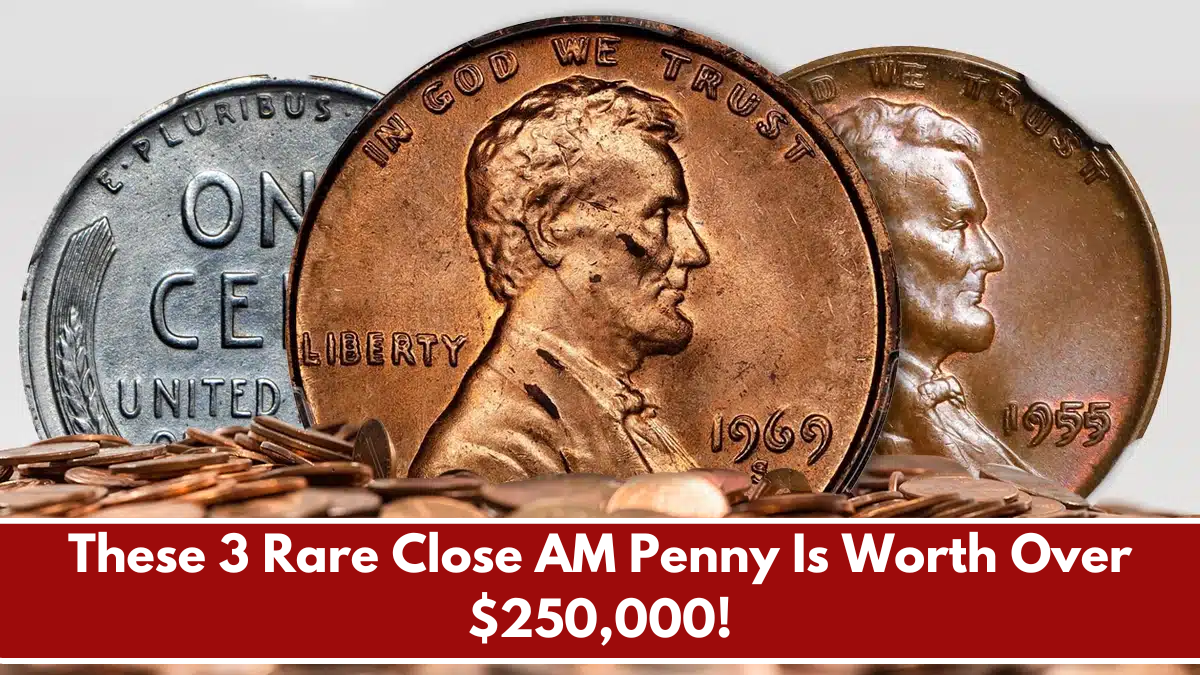Most of us wouldn’t think twice about tossing a penny into a change jar—but what if that ordinary coin could be worth over $250,000? Hidden among common pocket change are extremely rare Lincoln cents featuring what’s known as a “Close AM” design. These varieties are virtually identical to regular pennies at first glance, but a small design detail makes all the difference—and the value. Today, we’ll explore three rare Close AM pennies that have taken the coin collecting world by storm.
1992 Close AM Lincoln Cent
The 1992 Close AM penny is one of the most sought-after modern coin errors. Typically, pennies from this year should have a “Wide AM” reverse, where the letters “A” and “M” in “AMERICA” are clearly separated. However, in a few 1992 pennies, the “A” and “M” are nearly touching—creating the Close AM variety.
Only a handful of 1992 Close AMs are known to exist. One example in top condition sold for over $25,000, and collectors believe its value will keep rising as fewer are found. Keep an eye out for this subtle error—it could turn a penny into a massive payday.
1992-D Close AM Lincoln Cent
Even rarer than the Philadelphia-minted 1992 Close AM is the 1992-D (Denver Mint) version. This penny has the same error—“A” and “M” touching on the reverse—but it’s significantly harder to find. So far, only a few authenticated examples have surfaced, making it one of the rarest Lincoln cent varieties ever discovered.
Due to its extreme scarcity, the 1992-D Close AM can sell for over $75,000 in pristine condition. Even heavily circulated versions may still fetch tens of thousands. If you find one in your spare change, you could be holding a small fortune.
1999 Close AM Lincoln Cent
The 1999 Close AM penny is unique because, unlike the 1992 versions, this error involves the reverse design from a proof coin being used on a regular business strike. As a result, the letters “A” and “M” appear much closer together than usual.
Thousands of these error coins may exist, but finding one in great condition is still rare. In high grades, the 1999 Close AM has sold for up to $5,000–$10,000, with potential to increase over time. It’s a favorite among collectors and an exciting find for beginners.
Finding a rare Close AM penny is like striking gold in your pocket. These subtle errors, easily overlooked by the untrained eye, have turned ordinary coins into collector treasures worth thousands—or even hundreds of thousands—of dollars. So next time you come across a Lincoln cent from the 1990s, take a closer look. You might be holding the key to a surprise fortune.
FAQ’s:
1. How can I check for a Close AM penny?
Flip the coin and look at the word “AMERICA” on the reverse. In Close AM varieties, the “A” and “M” are nearly touching or just barely separated, unlike the standard Wide AM.
2. Are Close AM pennies valuable even in poor condition?
Yes. While condition affects value, even circulated Close AM pennies can be worth thousands if authenticated.
3. Can I find Close AM pennies in regular change?
It’s rare, but yes—these coins have been discovered in circulation, estate collections, and old coin jars.
4. Should I clean a penny before getting it appraised?
No. Cleaning a coin can reduce its value. Collectors prefer coins in their original state, even if they look dirty or worn.
5. Where can I sell a Close AM penny?
You can sell it through coin dealers, major auction houses, or online marketplaces—after getting it graded by a trusted service like PCGS or NGC.
